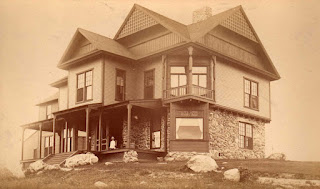John Glessner wrote extensively about his interactions with Richardson Brookline , Massachusetts Richardson Richardson
“His career was brief. In his time, he was the greatest architect America Richardson
“He had supreme confidence in his own powers and that sort of man never is envious or critical of others. Laughingly he said both of (Charles) McKim and of (Daniel) Burnham that they had the hardest problems that ever confronted men in their profession – they had designed buildings for their prospective fathers-in-law and then married the daughters with the possibilities of continuing criticism ever after.
“Mr. Richardson was watchful of criticism of his work, especially newspaper criticism, but unconcerned if that criticism didn’t find some really weak point. If it did, that was a totally different matter. ‘Oh, I know the weak points in my work’ he said. Well, Mr. R. what is the weak point in my house? ‘I don’t know that now; if I did I would correct it.’
“We went together to Phillips Brooks house on Clarendon and Newberry Sts. (in Boston
“We went to Trinity church together one weekday morning and sat there practically alone. There is always a reverent feeling comes over one at such a time, but it was especially marked in this case, in that large lonely room, except for the sun shining through the windows. Richardson
(The image accompanying this article is the portrait of Richardson November 10, 2012 during the Glessner symposium, keynote speaker and author James F. O’Gorman will discuss the significance of the portrait to the Glessners and to the ways in which Richardson




